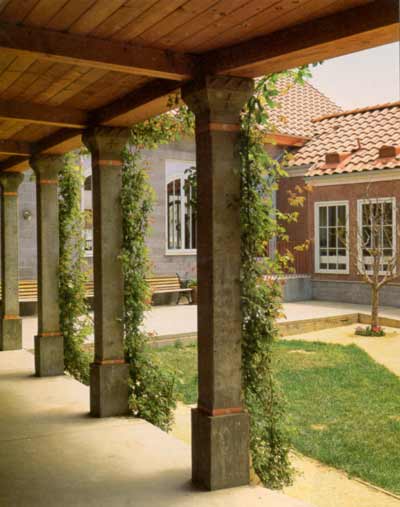 Ours is a complex age, contemporary wisdom advises. Everyone is so busy and there are so many people bustling about, doing different things. Manmade electronic satellites are whirling around the earth, for crying out loud. And that internet. No one ever exclaims, "What a complicated world: There are so many ideas!" The antidote to complexity is naturally simplicity, right? If we take a blade to complexity we can whittle it down to something more manageable.
Ours is a complex age, contemporary wisdom advises. Everyone is so busy and there are so many people bustling about, doing different things. Manmade electronic satellites are whirling around the earth, for crying out loud. And that internet. No one ever exclaims, "What a complicated world: There are so many ideas!" The antidote to complexity is naturally simplicity, right? If we take a blade to complexity we can whittle it down to something more manageable.This is the fool's game, for while simplicity is the opposite of complexity, its antidote is unity. People perceive the hustle and bustle of life, with all of its commerce and commotion, to be complexity because they presume there is some conglomerate entity, called society, which out to have a definitive character. The society which deviates from that character appears disordered. The phrase social engineer is often propped up by the paranoid and derided by political movers, but what does he do who attempts to move the masses of the polity?
Simplicity is harder to judge with respect to other aspects of life. Living seems complicated when it is not unified by purpose and the universe seems a maze of physical laws in the absence of a prime mover. Philosophy and physics are the tortured pursuits not for simplicity but for a principle of unification. As in philosophy and physics, though, it is challenging to comprehend the presence of simplicity in aesthetics because it is difficult to understand the unifying principle of complex art. How easily to explain that an overture is structured around the deviation from one expected note in the first few bars, or to trace out the vanishing point of a painting? Of course it is very easy to apprehend the purpose of great art and one, thankfully, need not be an expert to appreciate Bach and Shakespeare.
That nature tends to hide, however, does mean, though, that simplicity makes a dangerous mantra. Roger Scruton has pointed out that much simple modern art is simply a disguise for an artist's lack of creativity, from Duchamp's urinal to Koons' kitschy balloons. Artists have worked furiously to be creative within genres and limits; just compare Schubert's lieder, Mozart's concerti, Shakespeare's histories, or Rembrandt's portraits. And yet sterility persisted in the name of simplicity until it reached its apex, utilitarianism. One of the most egregious intrusions of this trend has been in architecture, specifically architecture with the most specific of purposes: churches.
Of church architecture, architect Ralph Adams Cram wrote that, "Every line, every mass, every detail, is so conceived and disposed that it exalts the altar, as any work of art leads to its just climax." [1] As a demonstration of this principle and the danger of adopting simplicity as a master, let us look at a church altar and its reredos, aka altarpiece.
The altar and altarpiece below reside in the chapel at Alton Towers, home to the Early of Shrewsbury in Staffordshire. Anyone who doesn't sympathize with the Crawley's of Downton Abbey and their quest to preserve the estate should know that Alton Towers was sold in 1924 and, with the exception of Alton's chapel, the property is best known today as Alton Towers Resort, "Making Britain Happy" with eight roller coasters and five water rides. [2, 3]
Anyway, Alton's chapel is beautiful and in the following images I've progressively eliminated the visual complexity of its altar and reredos. Let us see what the simplification reveals.
We could have reduced the structure further, leaving only the altar, but the points are apparent. Notice foremost that contra complaints about baroque detail distracting us, our attention to the altar fades in proportion to the removal of the detail, especially the loss of contrasting colors, shapes, and textures, namely the vertical elements which raise the parallel dimension of the altar upward. We also can see how, far from being busy, the structures neatly scaffold atop the altar. Finally, even those tiny details first eliminated serve to exalt the altar, adding contrast by their shape, direction, and texture, and a unity by their symmetries. All of the detail points to one purpose: Soli Deo gloria.
In contrast we may say paraphrasing architect Duncan Stroik, [4] that architectural reductionism reflects a liturgical reductionism. While we have examined diminution, the opposite is true too, for neither by addition or subtraction can we impose meaning irrespective of form, but must pursue through creativity, with existing forms and in tradition, an exalting unity.
–
[1] Rose, Michael S. Ugly as Sin. 2001. p. 84
[2] http://en.wikipedia.org/wiki/Alton_Towers
[3] http://www.towersalmanac.com/history/index.php?id=1
[4] Rose, Michael S. Ugly as Sin. 2001. p. 153
–– H/T to the Modern Medievalism blog for the picture of Alton's chapel.
































